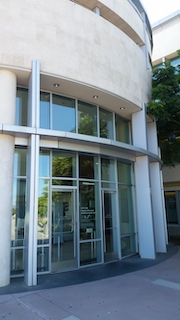Award Recipient
Top 100 Trial Attorneys in the United States
Contact Us for a Free ConsultationIt is not unusual for our office to get a call from someone who lost at trial, asking if a verdict can be appealed because of what the caller considered unethical conduct by the prosecutor. The caller will feel cheated and tricked and may believe even that the judge permitted this due to prejudice against the defendant.The Gist of this Article: If you lost at trial and believe the prosecutor was unethical, discuss the conduct at issue as soon as possible with an experienced appellate attorney who has past experience appealing criminal convictions based on prosecutorial misconduct.
 Murietta Courthouse
Murietta Courthouse1. Making references to facts not in the record. This is misconduct under People v. Bolton (1979) 23 Cal.3d 208, 212, 152 Cal.Rptr. 141. Most commonly, this takes place in cross-examination of witnesses that are part the defense case, in closing argument or in rebuttal to defendant’s closing argument.For more information about bail in general, please click on the following articles:
2. Stating personal opinion. People v. Kirkes (1952) 39 Cal.2d 719, 723, 249 P2d 1. This is often hard to object to, but it is inadmissible when the prosecutor argues to the jury, “I think . . .”
3. Appeals to passion or prejudice. People v. Criscione (1981) 125 Cal.App.3d 275, 292, 177 Cal.Rptr. 899. It should be understood that every trial, to some degree, appeals to passion or prejudice. It is unavoidable. However, when a prosecutor rhetorically asks a victim, “would a normal person be angered by this?” or in closing, asks the jury if defendant’s conduct was shameful, disrespectful or unethical. When this happens, the prosecutor has crossed the line, in our opinion.
4. Improper cross-examination of defendant. People v. Zambrano (2004) 124 Cal.App.4th 228, 241, 21 Cal.Rptr.3d 160 (prosecutor asked defendant whether police offers were lying). This type of cross-examination is argumentative and harassing.
5. Offer of inadmissible evidence. People v. Hudson (1981) 126 Cal.App.3d 733, 742, 179 Cal.Rptr. 95. This is usually an attempt to smuggle in hearsay, only to have defense counsel object, which the judge will usually sustain, but the jury hears the evidence and thinks about it.
6. Coercion of a defense witness or undue interference in a defense witness’s decision to testify. See People v. Bryant (1984) 157 Cal.App.3d 582, 590, 203 Cal.Rptr. 733. This is often by the prosecutor having the police try to get a recorded statement of a witness prior to trial and during the recorded statement, making comments about the witness’ decision to testify at trial.
7. Bolstering the credibility of a prosecution witness by referring to evidence outside the record or somehow trying to vouch for the witness’ testimony by reference to the witness’ criminal history, employment or reputation in the community. People v. Alvarado (2006) 141 Cal.App.4th 1577, 1584, 47 Cal.Rptr.3d 289.
8. Attacking the integrity of defense counsel or casting aspersions on defense counsel. See People v. Hill (1998) 17 Cal.4th 800, 832, 72 Cal.Rptr.2d 656. This usually does not happen with more senior prosecutors; however, younger prosecutors see things more personally and are more likely to believe this is appropriate due to how television portrays the practice of law. We find that once a prosecutor resorts to this type of low-class tactic, the jury senses their frustration and lack of confidence in their own case.
9. Comment on defendant’s failure to testify at trial. Griffin v. California (1965) 380 U.S. 609, 613, 14 L.Ed. 2d 106, 85 S. Ct. 1229. This does happen more than one might expect, despite the well-known right to remain silent in trial. Prosecutors most likely are always tempted to comment upon this in closing argument, and some succumb to the temptation.
10. Denial of discovery of material that is legally required to be disclosed. Penal Code § 1054. This often arises in the context of “we just got this” material the prosecution turns over right before trial or even during trial, but which was evidence that clearly existed or could have been found by the prosecution in response to defendant’s discovery requests.
Contact us.